At times, extreme and horrifying, at others, awe-inspiring and beautiful, but does 2019’s Blade of the Immortal anime capture the strange magic of Hiroaki Samura’s chanbara epic?
Strange beginnings

I think it’s fair to say that Blade of the Immortal has an extreme beginning: I’m thinking of Sabato Kuroi, with the severed heads of Rin’s mother and his ex-wife sewn to his shoulders like a villain in a horror film, to name but one totally reprehensible guy in first handful of episodes. Someone like Kuroi doesn’t fit in with how we come to view the Ittō-ryū later on or what their leader Kagehisa Anotsu stands for, because being a good fighter doesn’t also give you license to be a sadistic monster, but at this early point, it’s like creator Hiroaki Samura wasn’t sure of what he was going for. I’m not convinced that the Anotsu at the end of Blade of the Immortal would’ve allowed what happens to Rin’s mother at the beginning, but it remains the underlying justification for Rin’s revenge until the end anyway. Which is all to say, it gets better, I promise!
The horrifying human experimentation/prison arc
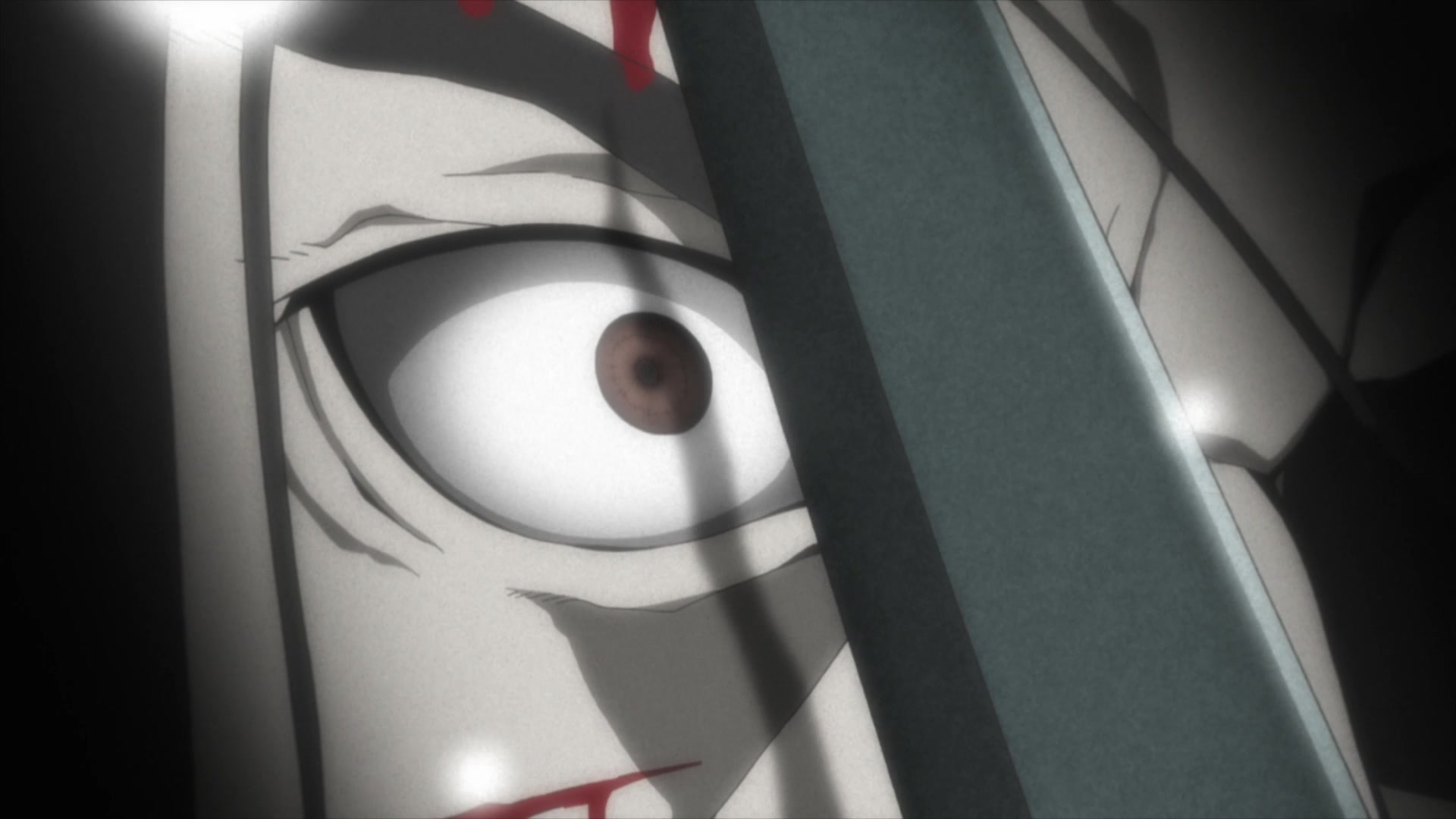
Things get pretty crazy when the immortal Manji is abducted by the Shogunate and subjected to a prolonged onslaught of dismemberments in an underground, hidden prison, a grim place that echoes Japan’s real WWII-era Unit 731, an infamous project that inflicted violent experiments on prisoners of war. In a story that’s filled with heartless acts of violence, I found this run of episodes to be the hardest to watch, but also the most powerful. The prisoners, faces masked, are brought in, dismembered and then exposed to Manji’s healing blood worms. They keep dying, so more prisoners are brought in, their lives flitted away, as the Chief Doctor slowly loses his mind trying to find the secret to Manji’s immortality.
Japan’s beautiful countryside
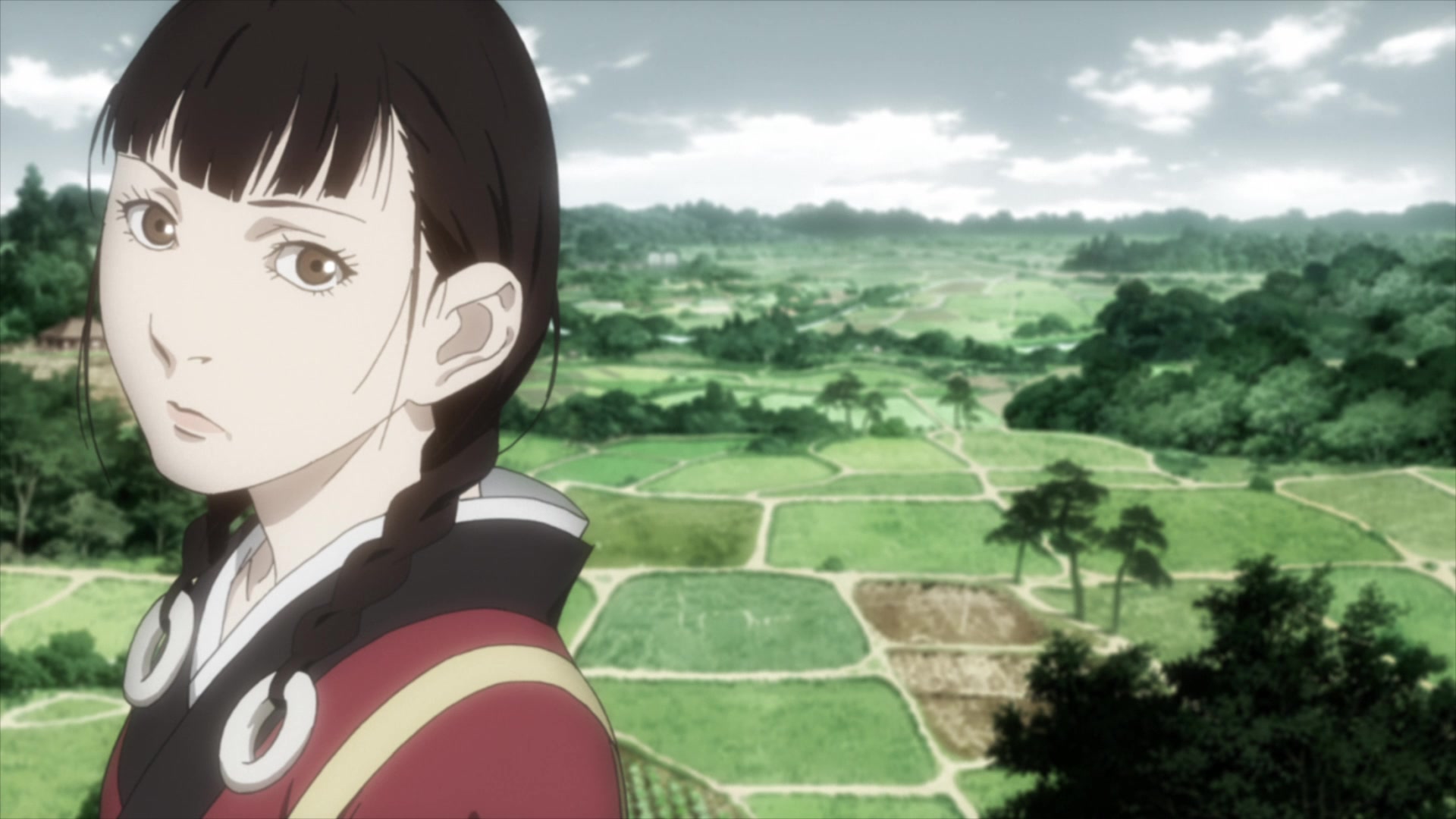
Like Dororo and Rurouni Kenshin, Blade of the Immortal is another chanbara story that depicts a violent and merciless Japan that’s also vibrant and lovely. Manji and Rin travel through Spring, Summer, Autumn and Winter, and as the story finally begins to climax, the snow begins to fall, dusting everything, from forest to harbor, in white. It looks so cold, and so beautiful.
Japan, you realise, is a fascinating character all of its own in Blade of the Immortal.
The strong side characters: Makie & Hyakurin
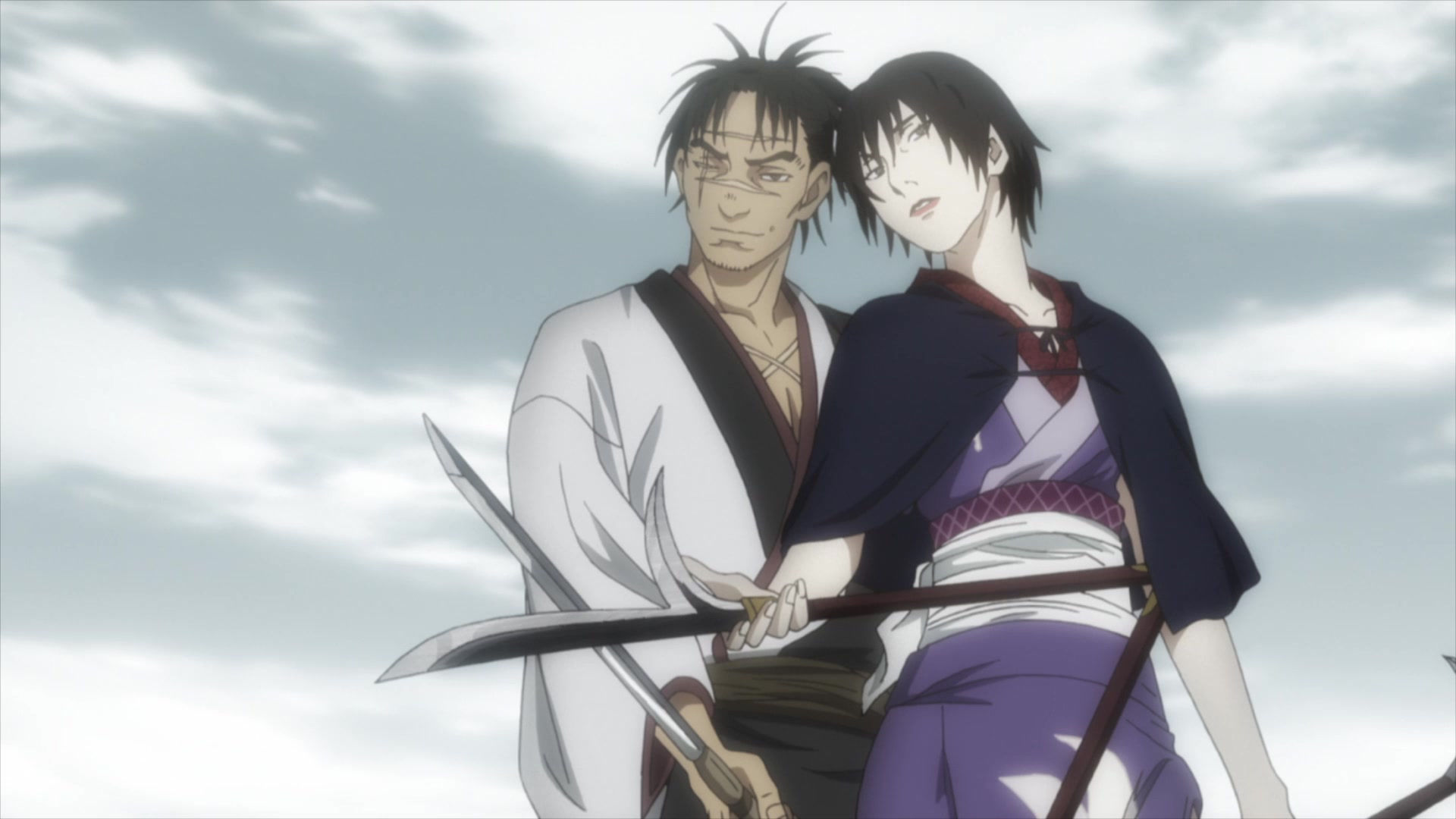
Blade of the Immortal was always Rin and Manji’s story, but along the way, it intertwines with the others. I have to mention the tragic Makie, a fighter without peer, whose style is elegant and balletic. She’s a pure, almost supernatural talent, with a fateful presence and melancholy expression, as if living her life knowing where it all ends yet cannot do a thing to change it.
In comparison, Hyakurin, with her loud bleached hair, has some of the worst treatment of any woman in this story, is sexually assaulted and degraded (indeed, by the end, she’s carrying a child conceived through rape) and yet she remains strong and never gives up. For her to survive in this heartless world, despite being a frail, flesh and blood person, shows how admirable she is.
90 years later: Blade of the Immortal’s ending

After Rin finally finishes off Anotsu, her and Manji part ways. I thought that this would be it, but the epilogue begins some 90 years later, in 1873, with Manji still alive and looking like he’s hardly aged a day, as Japan rapidly modernises in the wake of the Meiji Restoration.
He’s so old now that he can hardly remember Rin or the Ittō-ryū, but his memories are rekindled when he meets a little girl that turns out to be Rin’s great-great grandchild. She hands him a small knife, the very knife given to Rin by little Doa, with its wooden hilt carved with a pattern that is supposed to be Manji’s symbol wreathed in Rin’s flame. Passed down through the generations of her family, they were told that it should be given to the person that matches Manji’s image. All those years ago, Doa told Rin that she should carve the knife’s hilt herself, and give it to the person that she loves.
How successful was the 2019 anime?
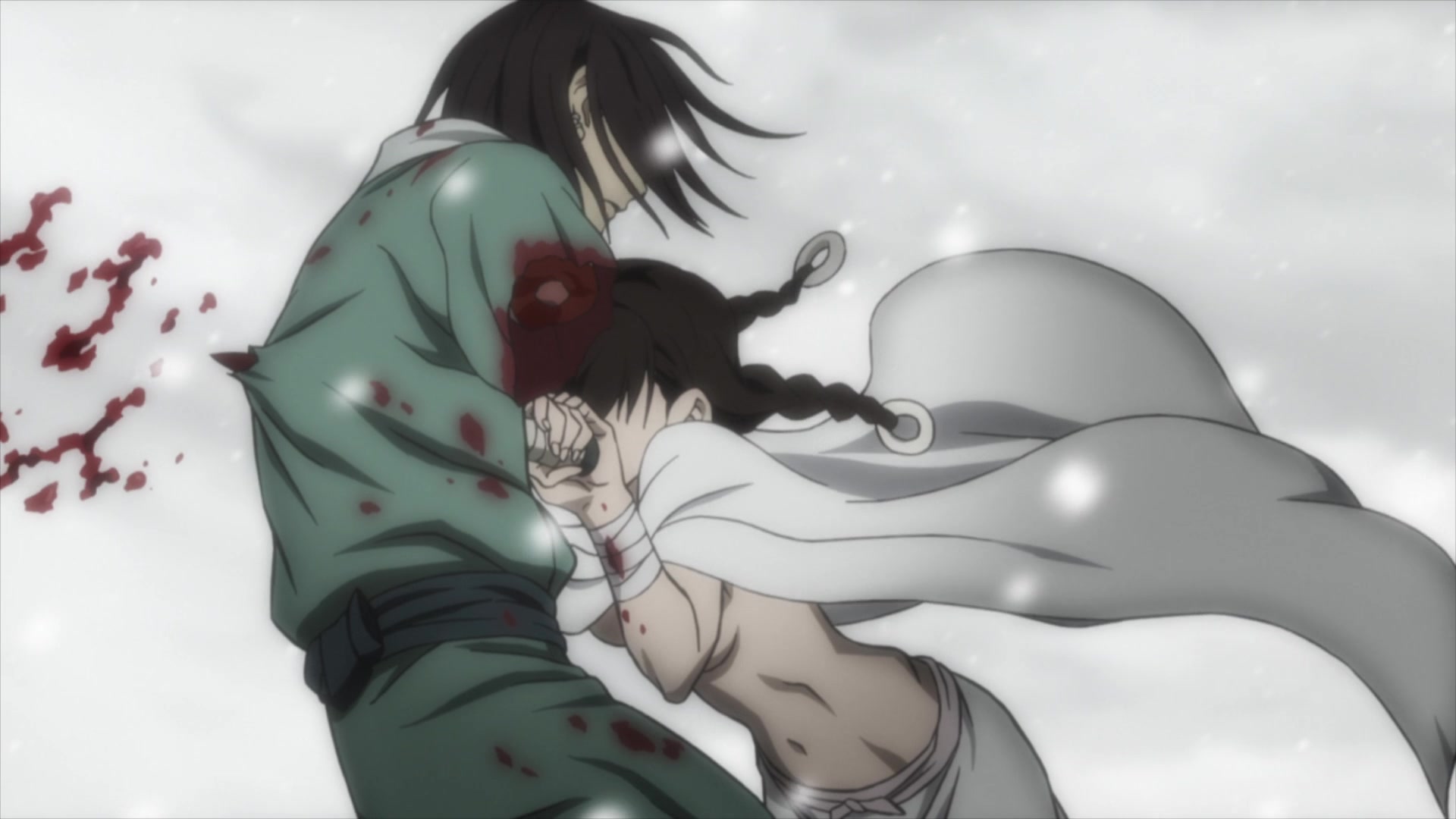
It’s fair to say I was hyped for 2019’s Blade of the Immortal anime, but did it live up to my high expectations?
I have to say “Yes!” but let’s not go overboard with the praise either, because this was not a smooth anime series by any means. It was a competent adaptation from a director in Hiroshi Hamasaki whose body-horror sensibilities and penchant for Dezaki esque postcard memories are a perfect match for heady seinen chanbara carnage like Blade of the Immortal, yet it suffers for trying to compress 205+ chapters of manga into 24 episodes of anime. There’s not nearly enough time to get it all on-screen, and as such, one is sometimes bewildered as intricate character motivations are lost in the rush to get to the end.
So, it isn’t the definitive Blade of the Immortal anime I was hoping for, but even still, it’s a great accompaniment to Hiroaki Samura’s beautifully drawn manga, has a lovely soundtrack, and is well worth watching for any adults fascinated by Japan’s era of samurai.
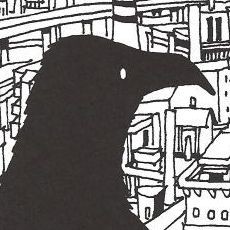
Leave a Reply